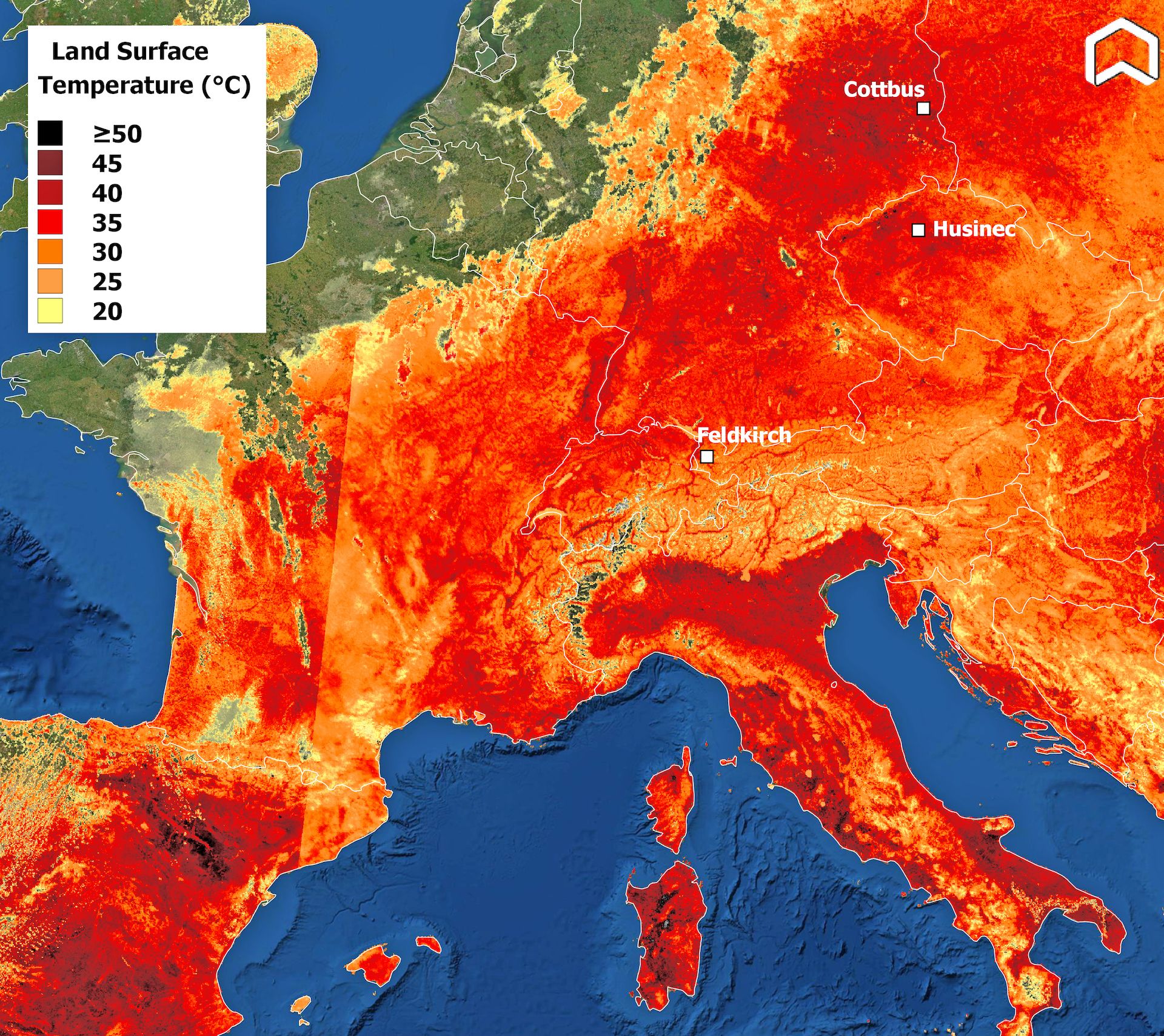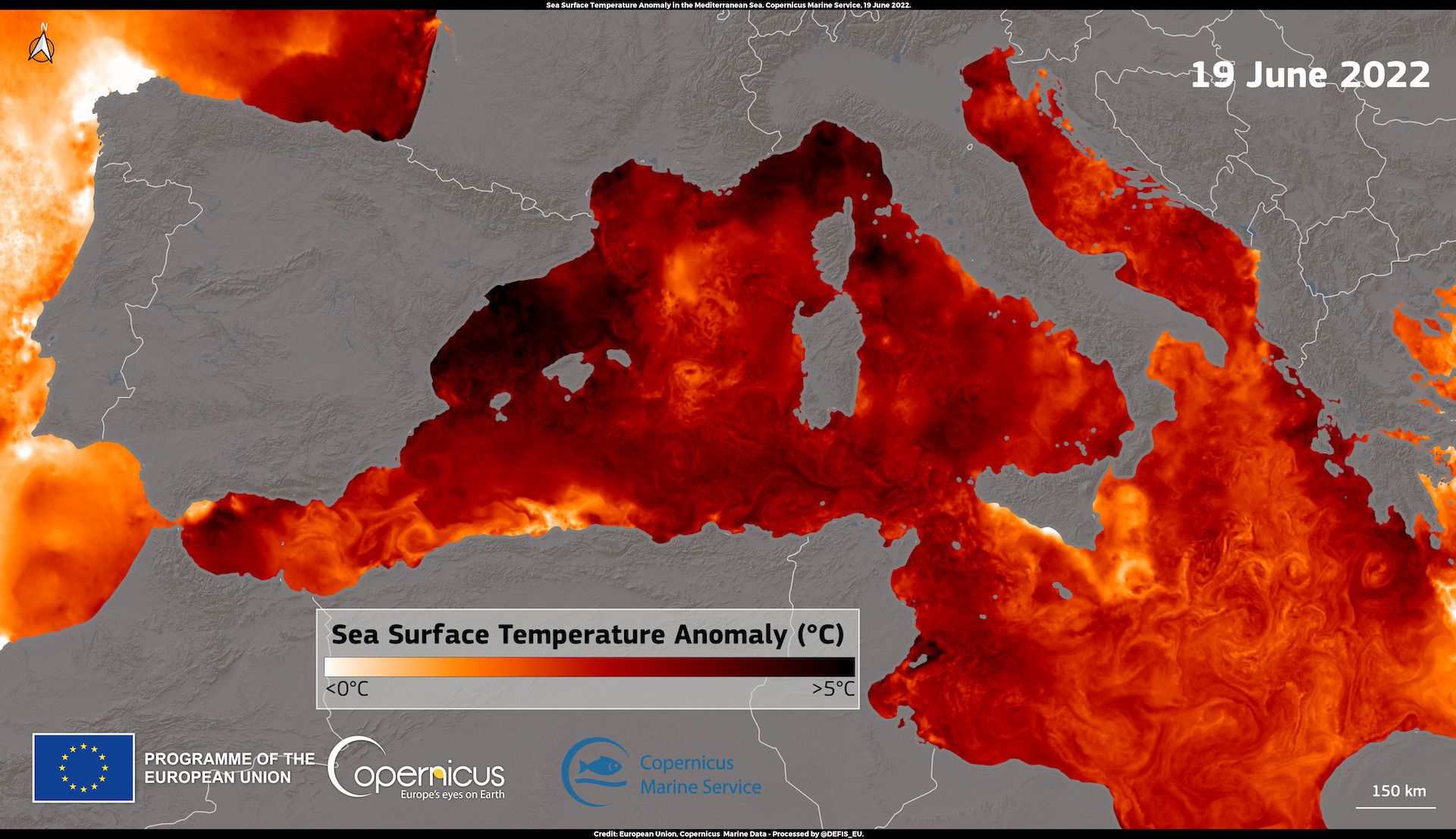Two extraordinary heat waves sent temperatures soaring into uncharted territory in Europe and the U.S. prior to the summer solstice, setting new benchmarks for the month of June in several European countries.
Why it matters: The early season extreme heat is a development meteorologists are calling "unsettling" and "unprecedented." These events are a clear warning sign of global warming's growing influence on day-to-day weather.
- Heat waves are deceptively deadly, with heat illnesses striking the most vulnerable among us, from the homeless to the elderly, along with poorer residents who cannot afford air conditioning.
- Such events are particularly dangerous when they occur in late spring or early in the summer, before people are accustomed to the high temperatures.

The big picture: The jet stream, which is a fast-flowing river of air flowing from east to west at high altitudes in the Northern Hemisphere, connects the two continental heat waves via a pattern of atmospheric waves. During the past week, the jet stream across Europe and North America have both been dominated by strong ridges of high pressure, also known as heat domes.
- In Europe, the heat wave began weeks ago as hot air built up over north Africa. This air mass eventually made its way northward into Spain. Aided by a highly amplified jet stream setup, the heat then surged into France and on to Central Europe.
- A persistent area of low pressure centered west of Portugal helped draw the hot air northward through its counterclockwise airflow.
- Across the U.S., the jet stream has been contorted aloft like a snake, with the heat dome currently centered in the middle of the country. Temperatures across the Midwest are forecast to reach the triple-digits Tuesday.
Zoom in: Human-caused global warming is altering the background conditions in which extreme heat events occur, and some studies suggest it is also affecting the jet stream itself.
- A warming planet is causing heat waves to become more intense, as well as more frequent and longer lasting.
- Numerous studies have attributed particular extreme heat events to global climate change, including in the U.S., Europe and elsewhere.
By the numbers: The heat in Europe and the U.S. has not been your typical summertime hot weather, in fact, the temperatures would be unusual for midsummer, let alone mid-June. National June heat records were set in Switzerland, Poland and the Czech Republic over the weekend.
- >200: Total number of monthly records set or tied in France, along with more than a dozen all-time heat records, according to weather historian Maximiliano Herrera.
- 102.6°F (39.2°C): High temperature in Cottbus, Germany, on Sunday, which was the hottest day ever recorded in that location dating back to 1888.
- 102.2°F (39.0°C): High temperature Sunday in Husinec, Czech Republic, which is now the hottest June temperature on record for the country.
- 110.3°F (43.5°C): High temperature June 18 in San Sebastián, Spain, which was the hottest day ever recorded in that location.
- 109.2°F (42.9°C): High temperature on June 18 at Biarritz, France, for its hottest day on record. This crushed the previous record, from August 2003, by 4°F.

The heat wave has helped elevate water temperatures in the Mediterranean to 9°F above average, depriving coastal areas of southern Europe of heat relief and potentially harming marine life.
Meanwhile... In the U.S., the record temperatures have not been quite as sizzling as they have been in Europe, but the heat has been relentless.
- 101°F: High temperature Monday in Minneapolis, breaking a daily record.
- 2,074: Number of warm temperature records set or tied, including daily highs and lows, in the Lower 48 states during the seven-day period ending on June 17, compared to just 444 cold records during the same period, according to NOAA.
- 22: Number of all-time warm temperature records set or tied during the seven-day period ending on June 17, compared to zero all-time cool temperature records during the same period.
What's next: While Europe catches a break from the heat, the Midwest and South will see temperatures climb to dangerously hot levels this week, before the extreme heat slides westward along the Gulf Coast to Texas. The National Weather Service describes Tuesday's conditions as "stifling heat and humidity" with temperatures 15-25°F above average in some areas.
- With drought in command of Texas and most of the West, it's likely that more record-breaking extreme heat events are in store for the actual summer season.
Go deeper: Heat wave to migrate from Midwest to the South this week







